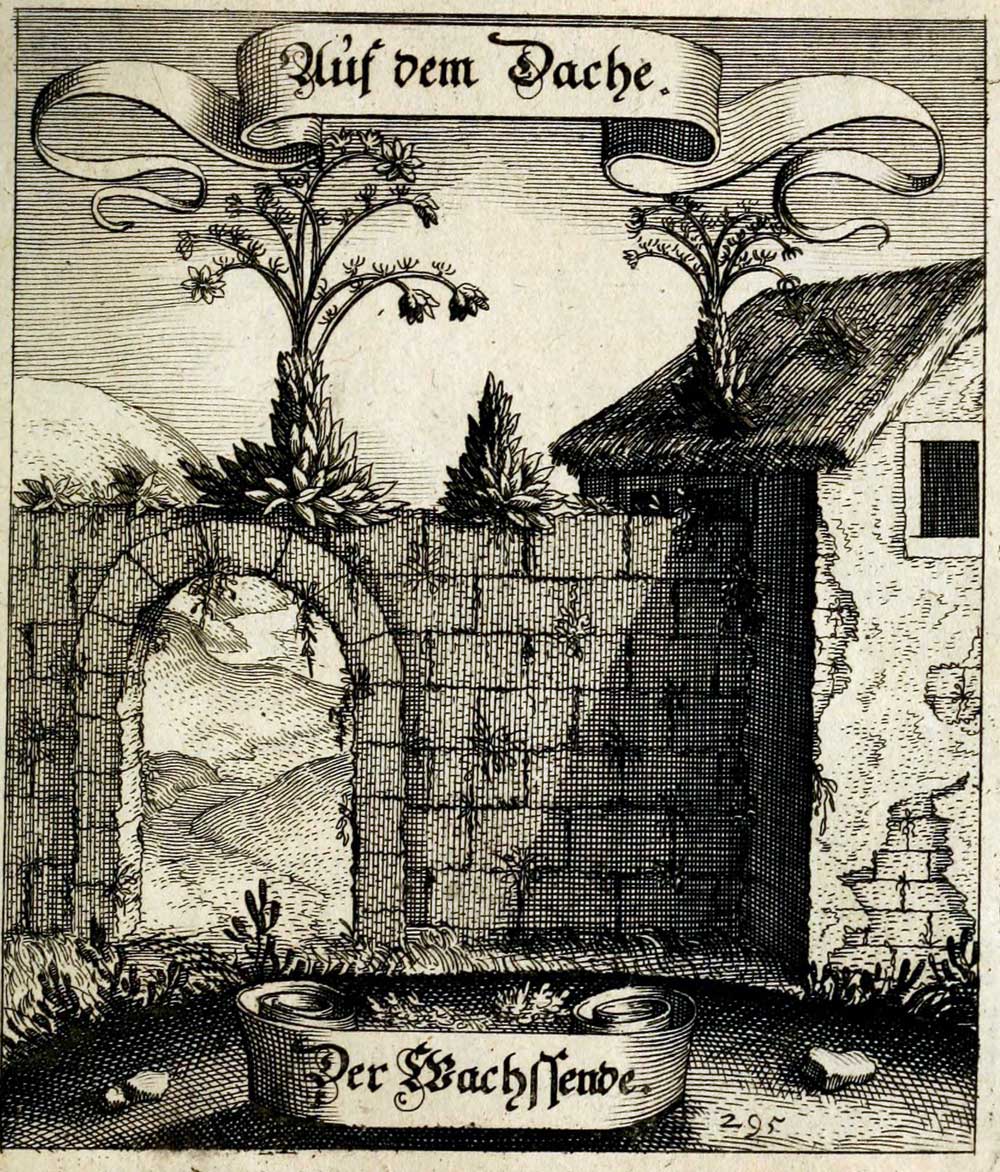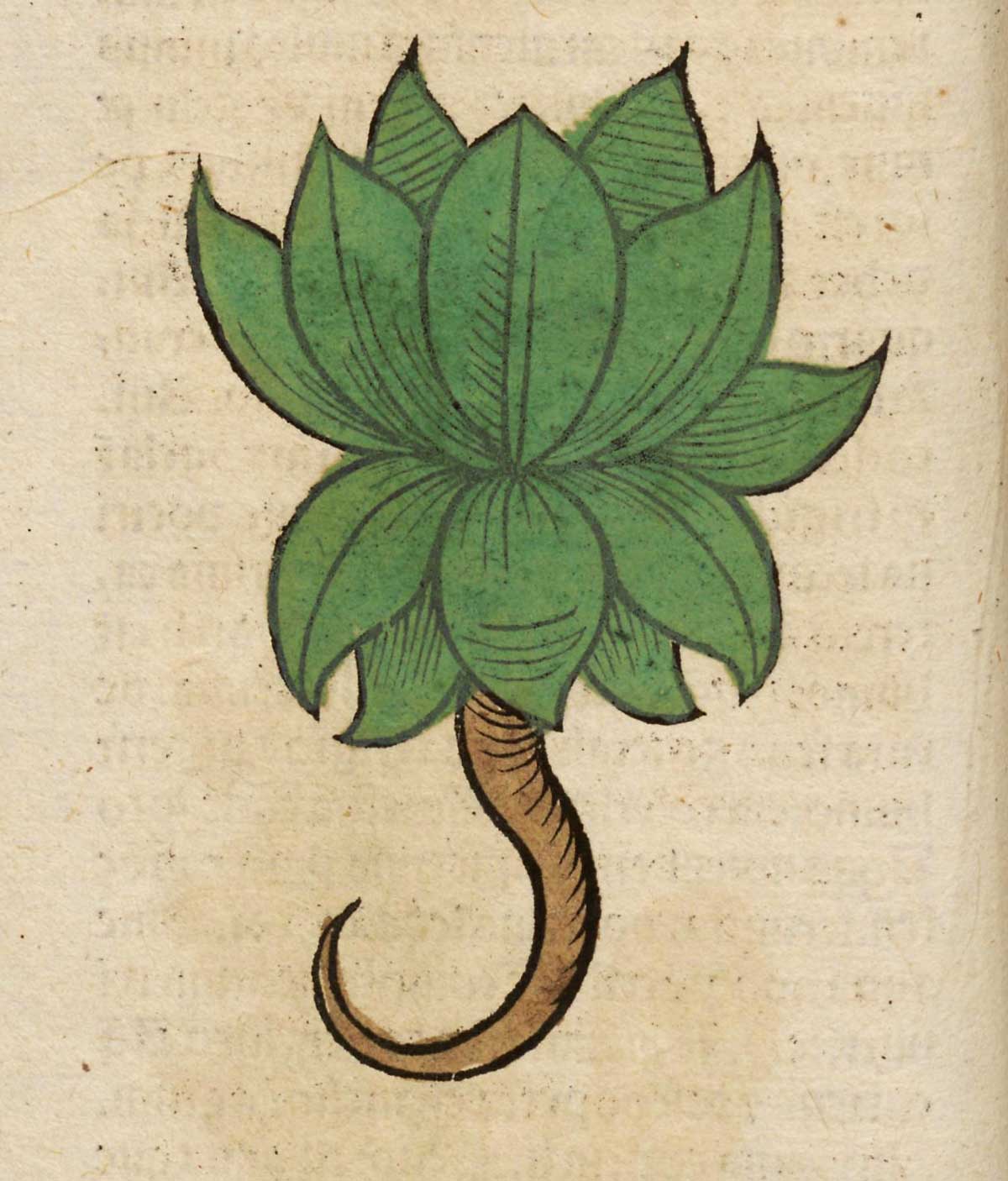Among the plants that are named for a higher resemblance.
Notes
Barba Jovis
Barba Jovis (text)
Sempervivum tectorum

Sempervivum tectorum L.
Hen and chickens, houseleek
La barbe de Jupiter
Le Duchat’s note: L’œil de Jupiter] C’eſt le nom que les Latins donnoient au ſempervivum majus. Voiez Saumaiſe, qui le prouve par deux autoritez Grecques, chap. 19. de ſes Homonymes hyles ïatrica. Folia pinguia, dit Geſner parlant de cette plante, carnoſsa, longitudine pollicari, in caumine lingua ſimilia, alia in terram convexa, alia in capite ſtantia invicem, ita ue ambitu effigiem imitentur oculi. C’eſt ſans doute à cause de ce rapport que les Latins appelérent œil de Jupiter le ſempervivum majus qu’immédiatement auparavant à cauſe d’un autre rapport Rabelais venoit de nommer avec les Grecs barbe de Jupiter.
Jupiter’s Beard
Jupiter’s Beard (Anthyllis Barba Jovis), from supposed resemblance to the massive beard of Jove as represented in scuplture. “Jovis barba, in opere topiario tonsilis et in rotunditatem spissa, argenteo folio” (Pliny, xvi. 18, § 31).
la barbe de Jupiter
«[Arbor] quæ apellatur Jovis barba… in rotunditatem spissa, argenteo folio», dit Pline, XVI, 31. C’est, pour Fée, Anthyllis barba Jovis, L. Le nom de barba Jovis, Joubarbe, a passé depuis Pline à une Crassulacée, Sempervivum tectorum, L. Cette plante, placée sur les toits, passait, dit Albert le Grand, pour écarter la foudre lancée par le dieu de tonnerre. (Paul Delaunay)
barba Jovis
odit et quae appellatur Iovis barba, in opere topiario tonsilis et in rotunditatem spissa, argenteo folio.
The shrub called Jupiter’s beard, used in ornamental gardening and clipped into a round bushy shape, and having a silvery leaf, also dislikes water.
la barbe de Jupiter,
Joubarbe (Pline, XVI, xxxi).
Sempervivum tectorum
Sempervivum tectorum (common houseleek)[1] is a species of flowering plant in the family Crassulaceae, native to the mountains of southern Europe, cultivated in the whole of Europe for its appearance and a Roman tradition claiming that it protects buildings against lightning strikes. Sempervivum tectorum was described in 1753 by Linnaeus, who noted that its leaves are ciliate, that is, fringed with hairs.
This plant has been known to humans for thousands of years, and has attracted many common names and traditions. In addition to common houseleek, names include variations of the following: … Jove’s beard, Jupiter’s eye …
The plant has been traditionally thought to protect against thunderstorms, and grown on house roofs for that reason,[13] which is why it is called House Leek.[6] Many of its popular names in different languages reflect an association with the Roman thunder-god Jupiter, notably the Latin barba Jovis (Jupiter’s beard), referred to in the Floridus traditionally attributed to Aemilius Macer,[14] and its French derivative joubarbe, which has in turn given rise to jubard and jo-barb in English…
It has been believed to protect more generally against decay and against witchcraft…

